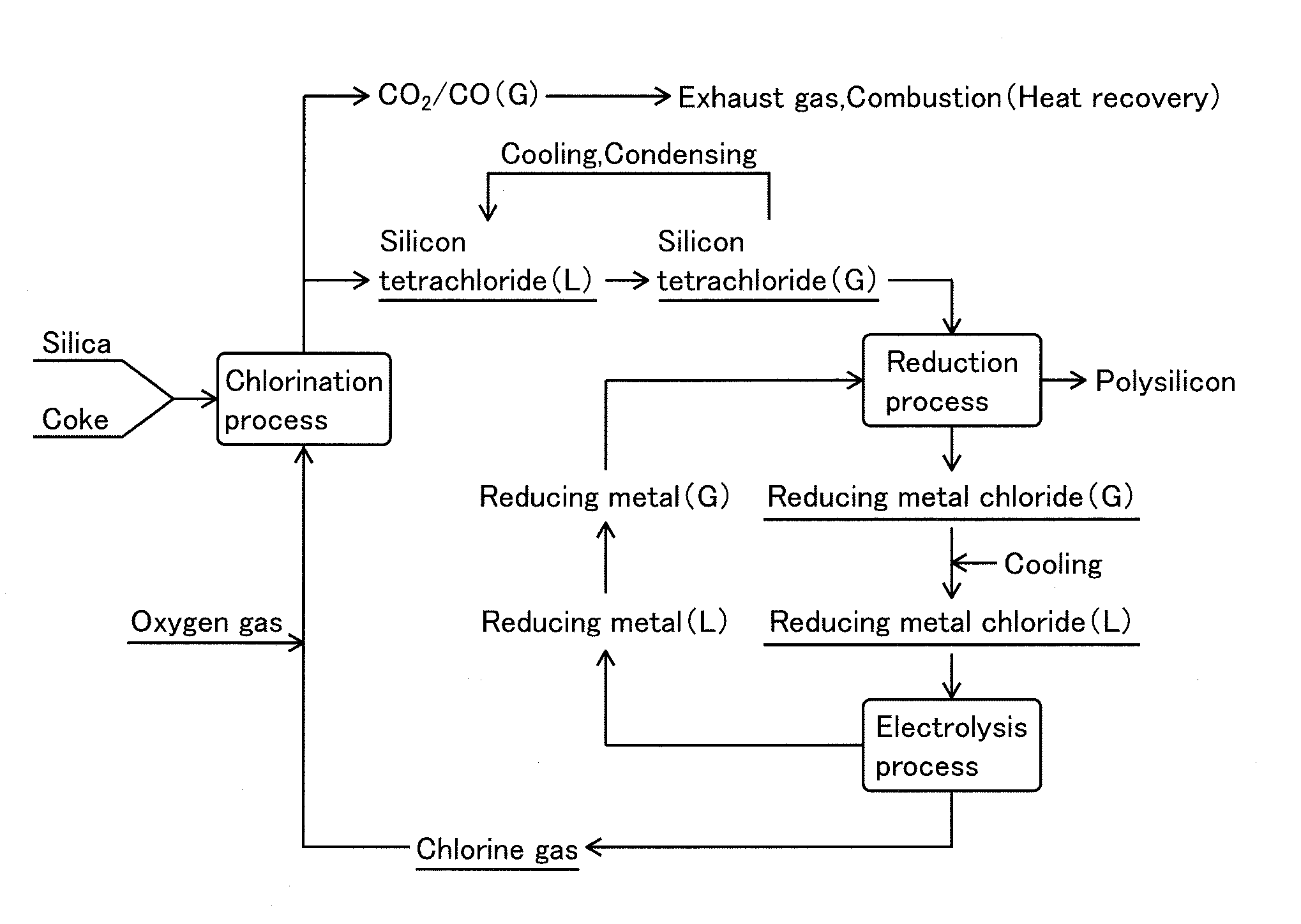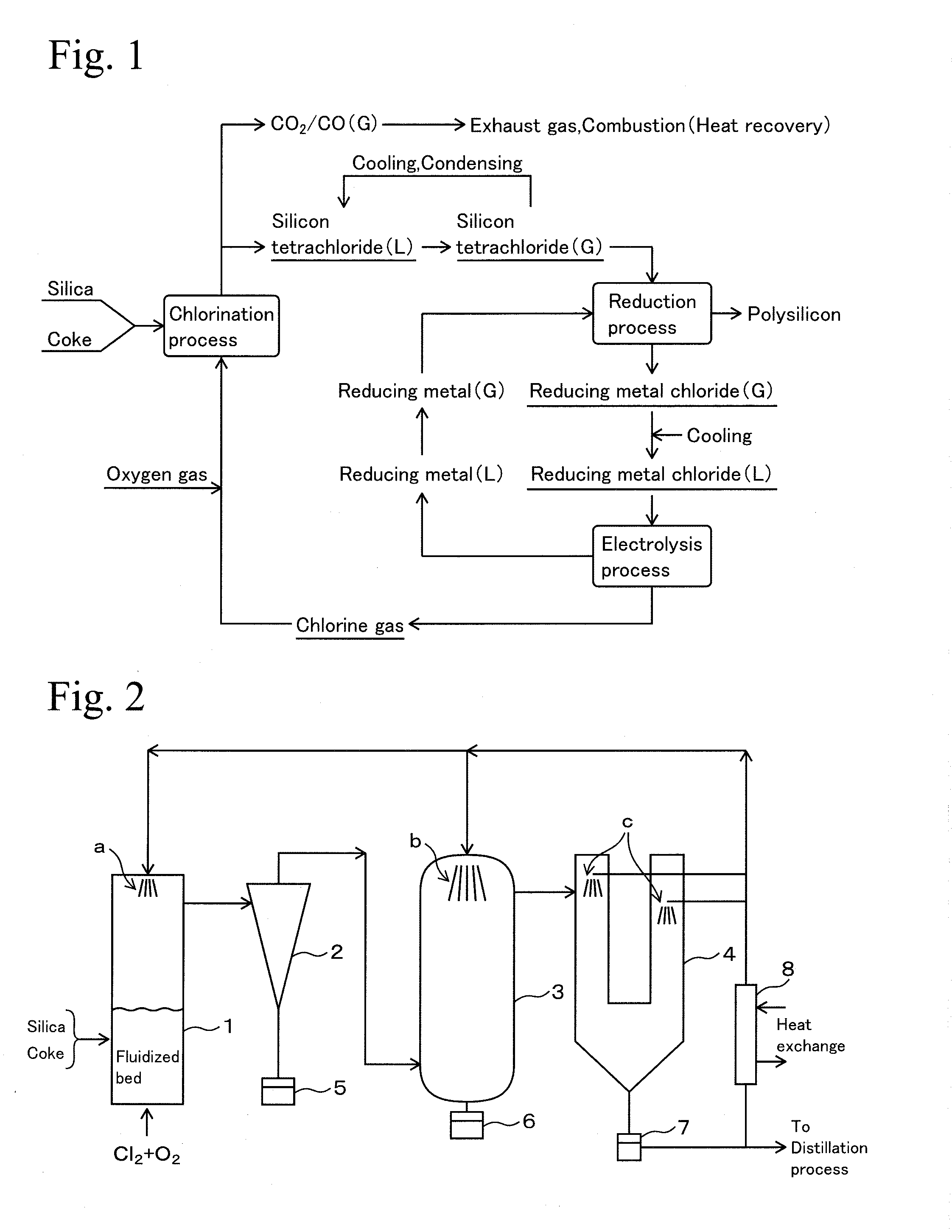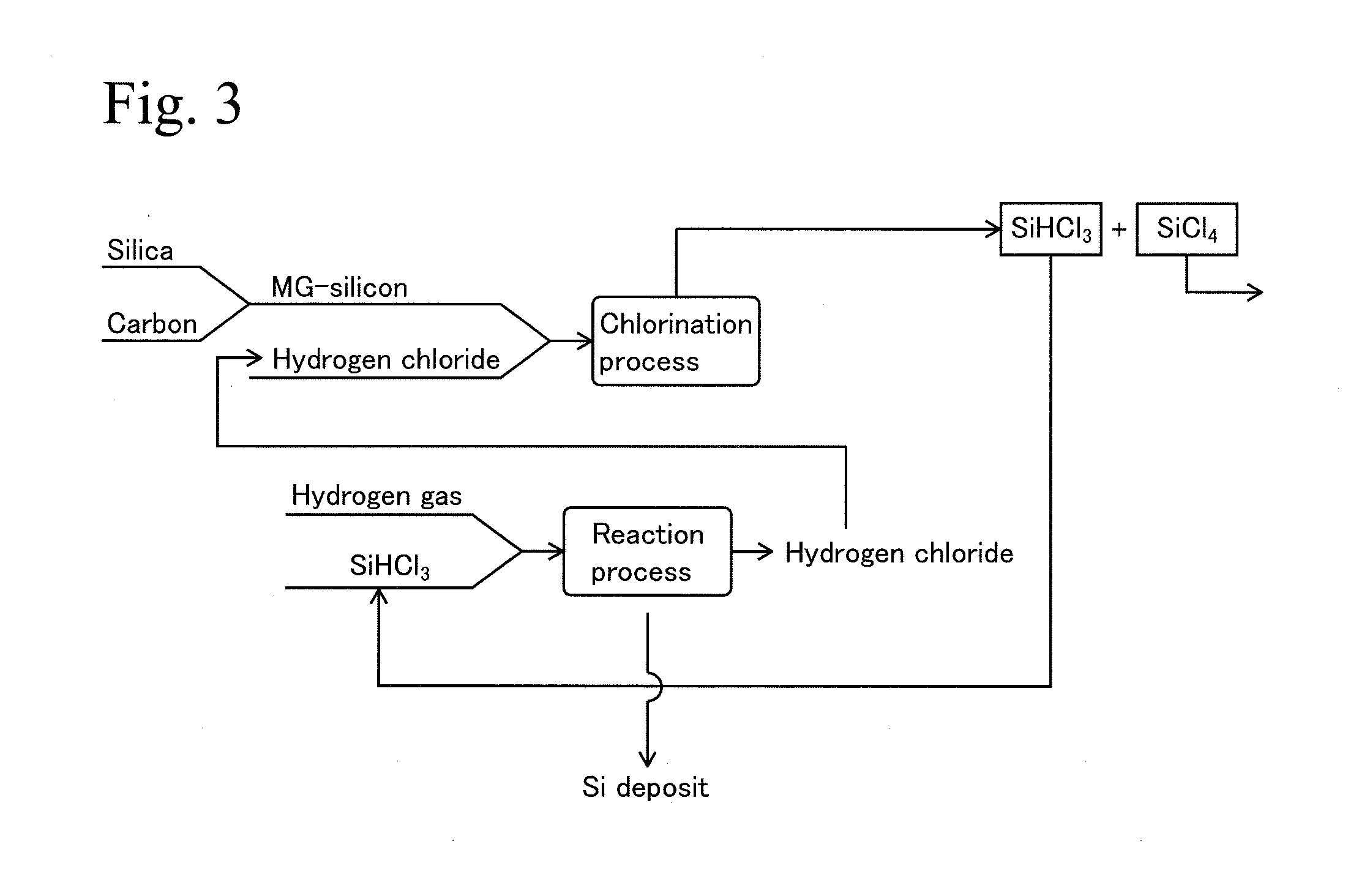Process for production of polysilicon and silicon tetrachloride
a technology of silicon tetrachloride and polysilicon, which is applied in the direction of halogenated silane, chemistry apparatus and processes, silicon compounds, etc., can solve the problems of high raw material cost, low silicon tetrachloride generation rate, and difficulty in achieving the effect of reducing the reaction rate of chlorination, promoting reaction, and stably using resources
- Summary
- Abstract
- Description
- Claims
- Application Information
AI Technical Summary
Benefits of technology
Problems solved by technology
Method used
Image
Examples
example 1
[0116]Using the device shown in FIG. 2 under the following conditions, silicon tetrachloride was generated in a chlorination process using silica as a raw material, and silicon tetrachloride was reduced by zinc metal vapor in a reduction process to obtain polysilicon solid. Furthermore, zinc chloride by-produced in the reduction process was molten salt electrolyzed to zinc metal and chlorine gas in the electrolysis process, and they were reused as reducing agent of silicon tetrachloride and chlorinating agent of silica, respectively. Furthermore, polysilicon generated in the reduction process was melted and deposited on crystal core as a highly pure silicon.
1. Chlorination Process
1) Raw Material
[0117]Granulated body having size in a range from 1 to 2 mm was formed by using the following raw materials to employ chlorination reaction.
[0118](1) Silica: Purity 98 wt %, particle diameter after crushing 5 μm
[0119](2) Coke: Purity 90 wt %, particle diameter after crushing 10 μm, petroleum ...
example 2
[0126]After mixing silica and coke of Example 1 before crushing at a mole ratio of 1:2 and placing in a ball mill, particle diameter of silica and coke was changed by changing the crushing time using crushing machine. After adding TEOS at 25% amount of silica and coke, they were treated to form a granulated body by using a granulating machine. After heating and drying, the granulated body was regulated in a range from 0.5 mm to 1 mm. Chlorination test was performed by using a fixed bed, and generation of silicon tetrachloride could be confirmed.
[0127]Reaction rate index of silica was calculated by the formula (1). Reaction rates confirmed under several test conditions are shown in Table 1.
[0128]By employing a granulated body consisting of silica having a particle diameter not greater than 5 μm and coke having particle diameter not greater than 10 μm in the chlorination reaction, generation of silicon tetrachloride was efficiently confirmed. In particular, reaction rate of silicon te...
example 3
[0129]Mole ratio of silica and coke consisting the granulated body in Example 2 was varied to several values, and its effect on generation of silicon tetrachloride was tested. The results are shown in Table 2. In the case in which mole ratio of coke to silica was in a range from 1.0 to 4.0, utilization ratio of chlorine gas was not less than 90%, which was good reactivity. However, in the case in which mole ratio of coke to silica was 0.5, utilization ratio of chlorine gas was decreased to 50%.
[0130]Here, the utilization ratio of chlorine gas was defined as a mole ratio (%) of chlorine gas amount calculated from recovered silicon tetrachloride versus supplied amount of chlorine gas. By this Example, it was confirmed that the mole ratio of coke to silica in the granular body was desirably in a range from 1.0 to 4.0.
TABLE 2Utilization ratio ofC / SiO2chlorine gas (%)4.0992.01001.0900.550
PUM
| Property | Measurement | Unit |
|---|---|---|
| porosity | aaaaa | aaaaa |
| diameter | aaaaa | aaaaa |
| diameter | aaaaa | aaaaa |
Abstract
Description
Claims
Application Information
 Login to View More
Login to View More - R&D
- Intellectual Property
- Life Sciences
- Materials
- Tech Scout
- Unparalleled Data Quality
- Higher Quality Content
- 60% Fewer Hallucinations
Browse by: Latest US Patents, China's latest patents, Technical Efficacy Thesaurus, Application Domain, Technology Topic, Popular Technical Reports.
© 2025 PatSnap. All rights reserved.Legal|Privacy policy|Modern Slavery Act Transparency Statement|Sitemap|About US| Contact US: help@patsnap.com



